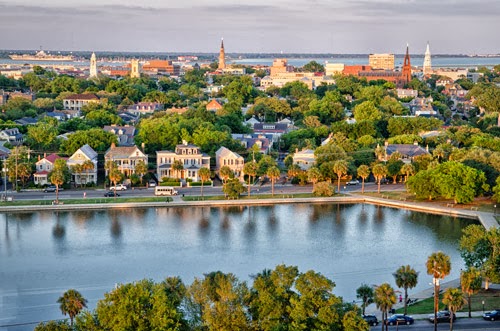Critical to the health of the tri-county area and home sales, Mayor Joe Riley's "state of the city" address focused on job creation and his vision for bringing Charleston through the economic downturn.
By Ashley Fletcher Frampton
Published Jan. 27, 2010
During a 30-minute “State of the City” address Tuesday night, Mayor Joe Riley recounted major city projects completed during 2009 and previewed several next steps, many of which relate to job creation.
“Our future is bright, and our economic recovery is well under way,” Riley said as he began the speech before City Council members and a TV audience.
During 2009, the city received $16 million from the American Recovery and Reinvestment Act that has helped pay for affordable housing renovations, new police officers, a new community center and more, Riley said.
“These funds created jobs and added substantially to our community,” he said.
Riley said spurring economic development is always an important responsibility of city government. “But it’s never been more important than now,” he said.
Riley pointed to the 2009 completion of the SCRA MUSC Innovation Center biotechnology incubator on Meeting Street as a huge step forward in economic development. The project, he said, “will prove to be a pivotal point in our community’s economic development history.”
The city partnered on that project with the Medical University of South Carolina and the S.C. Research Authority, transforming a former mattress factory into a temporary home for startup research businesses that need access to wet labs.
The next step in positioning Charleston to be a national leader in biotech and life sciences research is the development of the Horizon District, Riley said.
That district includes the area between Lockwood Boulevard and Hagood Avenue on the city’s west side. The city officially designated the area as a tax-increment financing district in late 2008, and Riley said Tuesday that the city has continued planning for its development.
The vision is to build a live-work community where research and ideas incubated at the Innovation Center can “move to scale” as businesses, Riley said.
Another incubator-type project that the city finalized in 2009 is a building at the corner of Calhoun and East Bay streets called the Flagship. The building offers small professional office spaces for rent at low prices and flexible terms for startups and companies relocating to Charleston.
The Flagship houses the Charleston Digital Corridor, a resource network the city created in 2001 for knowledge-based industries, along with the city’s Business Development Department.
Seven businesses are working out of the Flagship now, Riley said.
“We are planning to replicate the Flagship concept of small-business incubation in a location west of the Ashley and will work to continue to develop this initiative in other parts of our city as well,” he said.
Riley also announced a new initiative of the Charleston Digital Corridor, a Web site meant to help knowledge-based companies in the area recruit workers. The new site, called Charleston Works, promotes the city as an emerging destination for technology professionals and lists local technology companies’ openings in one place.
Riley said the new Web site is based on the recognition that a skilled work force is a cornerstone in building a knowledge-based economy.
The mayor called Boeing’s announcement of plans to build a second 787 Dreamliner assembly plant in North Charleston “the biggest job creation news not only this year but arguably in our history.”
More than 2,000 people are expected to work on the plant’s construction, Riley said. When it’s completed in 2011, the company expects to hire at least 3,800 people over the first few years.
Riley said he has created a task force to ensure the city does everything it can to support the residential and commercial development that will come as a result of the Boeing project.
Other highlights of 2009, Riley noted, were the completion of the city’s ongoing King Street streetscape work, the start of a joint planning effort for a new cruise ship passenger terminal at the S.C. State Ports Authority, and the work of a citizen committee charged with writing a Charleston Green Plan to help the city reduce its carbon footprint.
The citizen committee presented its Green Plan to City Council in December. But after controversy about its details, the council delayed a vote until early this year.
Drainage improvement was another issue that Riley focused on during his speech. In particular, he talked about the city’s request for federal stimulus funding for an overhaul to the drainage system underneath downtown roads, including the Crosstown Expressway.
The city has asked for $146.3 million for work to prevent the substantial flooding that occurs downtown during rainstorms, impeding vehicle and pedestrian traffic. In December, city officials went so far as to temporarily close off access to downtown because of flooding.
Riley said the drainage project is completely designed and engineered.
“It’s shovel-ready,” he said. “I’ve met with the (U.S.) Secretary of Transportation three times, the Secretary of Homeland Security, our congressional delegation. Sen. (Lindsey) Graham, Congressman (Jim) Clyburn have been of huge help.
“We’re doing everything possible to get this grant. But I will not rest until this serious drainage problem is addressed.”
Wednesday, January 27, 2010
Subscribe to:
Posts (Atom)
